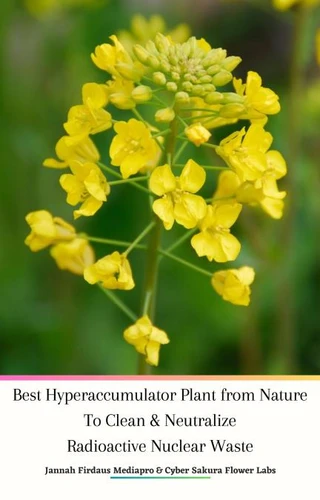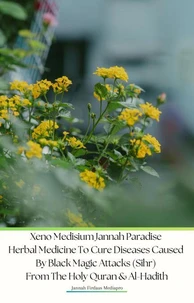Best Hyperaccumulator Plant from Nature To Clean & Neutralize Radioactive Nuclear Waste
Par : ,Formats :
Disponible dans votre compte client Decitre ou Furet du Nord dès validation de votre commande. Le format ePub est :
- Compatible avec une lecture sur My Vivlio (smartphone, tablette, ordinateur)
- Compatible avec une lecture sur liseuses Vivlio
- Pour les liseuses autres que Vivlio, vous devez utiliser le logiciel Adobe Digital Edition. Non compatible avec la lecture sur les liseuses Kindle, Remarkable et Sony
 , qui est-ce ?
, qui est-ce ?Notre partenaire de plateforme de lecture numérique où vous retrouverez l'ensemble de vos ebooks gratuitement
Pour en savoir plus sur nos ebooks, consultez notre aide en ligne ici
- FormatePub
- ISBN8224721146
- EAN9798224721146
- Date de parution10/03/2024
- Protection num.pas de protection
- Infos supplémentairesepub
- ÉditeurVirtued Press
Résumé
Hyperaccumulator plants are capable of removing and storing large amounts of radioactive nuclear waste from the environment. These plants are often used in phytoremediation, a process of using plants to remove pollutants from the environment. Examples of hyperaccumulator plants include Sunflower, Thlaspi caerulescens, Pteris vittata, Stanleya pinnata, Vetiveria zizanioides and Euphorbia hirta. These plants have been used in the past to clean up the radioactive isotopes that were released during the Chernobyl Nuclear Power Plant accident in 1986. Additionally, some species of hyperaccumulator plants, such as Brassica juncea, have been shown to be effective at removing uranium from contaminated soil.
Radioactive nuclear waste can be extremely dangerous to both humans and the environment. It has the potential to cause serious health problems and long-term environmental damage. Radioactive Nuclear Waste can contaminate groundwater, soil, and air, and can spread to other areas, potentially causing serious health problems to people who come into contact with it. Radioactive nuclear waste can also have an effect on the environment, harming plants and animals and disrupting ecosystems.
Radioactive nuclear waste can be extremely dangerous to both humans and the environment. It has the potential to cause serious health problems and long-term environmental damage. Radioactive Nuclear Waste can contaminate groundwater, soil, and air, and can spread to other areas, potentially causing serious health problems to people who come into contact with it. Radioactive nuclear waste can also have an effect on the environment, harming plants and animals and disrupting ecosystems.
Hyperaccumulator plants are capable of removing and storing large amounts of radioactive nuclear waste from the environment. These plants are often used in phytoremediation, a process of using plants to remove pollutants from the environment. Examples of hyperaccumulator plants include Sunflower, Thlaspi caerulescens, Pteris vittata, Stanleya pinnata, Vetiveria zizanioides and Euphorbia hirta. These plants have been used in the past to clean up the radioactive isotopes that were released during the Chernobyl Nuclear Power Plant accident in 1986. Additionally, some species of hyperaccumulator plants, such as Brassica juncea, have been shown to be effective at removing uranium from contaminated soil.
Radioactive nuclear waste can be extremely dangerous to both humans and the environment. It has the potential to cause serious health problems and long-term environmental damage. Radioactive Nuclear Waste can contaminate groundwater, soil, and air, and can spread to other areas, potentially causing serious health problems to people who come into contact with it. Radioactive nuclear waste can also have an effect on the environment, harming plants and animals and disrupting ecosystems.
Radioactive nuclear waste can be extremely dangerous to both humans and the environment. It has the potential to cause serious health problems and long-term environmental damage. Radioactive Nuclear Waste can contaminate groundwater, soil, and air, and can spread to other areas, potentially causing serious health problems to people who come into contact with it. Radioactive nuclear waste can also have an effect on the environment, harming plants and animals and disrupting ecosystems.






















